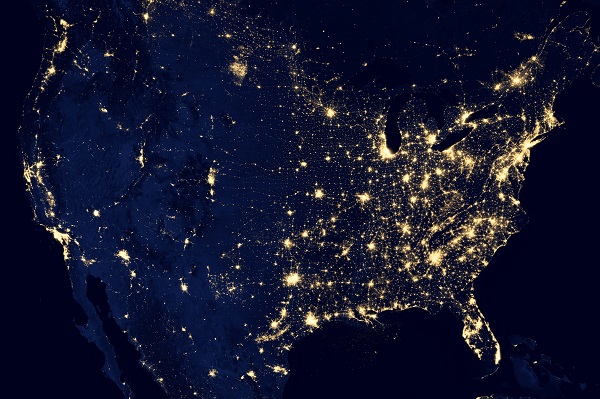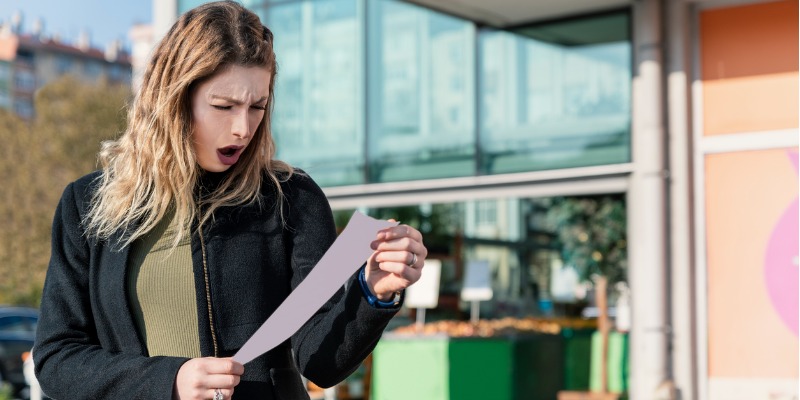Business
Canada has fewer doctors, hospital beds, MRIs and among longest wait times than other countries with universal health care

From the Fraser Institute
By Mackenzie Moir and Bacchus Barua
Among a group of 31 high-income countries that have universally accessible health care, Canada has among the lowest availability of doctors, hospital beds, and most medical technologies—and some of the longest wait times, finds a new study released today by the Fraser Institute, an independent, non-partisan Canadian public policy think-tank.
“There is a clear imbalance between the high cost of Canada’s health-care system and the value Canadians receive—particularly in terms of availability of medical resources and timely access to care,” said Bacchus Barua, director of health policy studies at the Fraser Institute and co-author of Comparing Performance of Universal Health Care
Countries, 2024.
The study compares 31 universal health-care systems in developed countries using over 40 indicators.
In 2022, using the latest year of comparable data and after adjusting for age, Canada ranked among the top third of health care spenders—4th highest for spending as a share of the economy (11.5 per cent) and 9th highest for spending per person.
Despite Canada’s high level of spending, availability and access to medical resources is generally worse than in comparable countries.
For example, Canada ranked 28th (out of 30) for the availability of doctors, 25th for hospital beds, and 25th for psychiatric beds.
That same year, Canada ranked 27th (out of 31) for the number of MRI machines available per million people, and 28th for CT scanners.
Crucially, among the nine comparable universal health-care countries that measure wait times, Canada ranks 8th (second-worst) for patients who waited more than a month to see a specialist (65.2 per cent), and the worst (9th out of 9) for patients who waited two months or more for non-emergency surgery (58.3 per cent).
“Canadians are increasingly aware of the shortcomings of their health-care system,” said Mackenzie Moir, policy analyst and co-author of the report.
“To improve health care for Canadians, policymakers should learn from other countries around the world that do universal health care better.”
- Among 31 high-income universal healthcare countries, Canada ranks among the top third of spenders but receives average to poor value in return.
- After adjusting for differences in age between countries, Canada ranked fourth highest for spending as a percentage of GDP and ninth highest for spending per person in 2022 (the most recent year of comparable data).
- Across over 40 indictors measured, Canada’s performance for availability and timely access to medical resources was generally below that of the average OECD country.
- In 2022, Canada ranked 28th (of 30) for the relative availability of doctors and 25th (of 30) for hospital beds dedicated to physical care. The same year, Canada ranked 27th (of 31) for the relative availability of Magnetic Resonance Imaging (MRI) machines, and 28th (of 31) for CT scanners.
- Canada ranked last (or close to last) on three of four indicators of timeliness of care; and ranked sixth (of nine) on the indicator measuring the percentage of patients who reported that cost was a barrier to access.
- Notably, among the nine countries that measure wait times, Canada ranked eighth worst for the percentage of patients who waited more than one month to see a specialist (65%), and reported the highest percentage of patients (58%) who waited two months or more for non-emergency surgery.
- Canada’s performance for use of resources and quality and clinical performance was mixed.
- Clearly, there is an imbalance between the value Canadians receive and the relatively high amount of money they spend on their health-care system.
Authors:
Business
WEF-linked Linda Yaccarino to step down as CEO of X

From LifeSiteNews
Yaccarino had raised concerns among conservatives and free speech advocates for previously serving as chairwoman of a World Economic Forum taskforce and promoting DEI and the COVID shots.
X CEO, Linda Yaccarino, announced today that she is departing from her position at the social media giant.
“After two incredible years, I’ve decided to step down as CEO of 𝕏,” wrote Yaccarino on X.
“When Elon Musk and I first spoke of his vision for X, I knew it would be the opportunity of a lifetime to carry out the extraordinary mission of this company,” she continued. “I’m immensely grateful to him for entrusting me with the responsibility of protecting free speech, turning the company around, and transforming X into the Everything App.”
“I’m incredibly proud of the X team – the historic business turn around we have accomplished together has been nothing short of remarkable,” she said.
After two incredible years, I’ve decided to step down as CEO of 𝕏.
When @elonmusk and I first spoke of his vision for X, I knew it would be the opportunity of a lifetime to carry out the extraordinary mission of this company. I’m immensely grateful to him for entrusting me…
— Linda Yaccarino (@lindayaX) July 9, 2025
Musk hired Yaccarino in May 2023, seven months after his $44 billion purchase of the tech company, then known as “Twitter.”
At the time, Musk’s choice to take the helm at his newly acquired company raised eyebrows among conservative observers who had earlier rejoiced at the tech mogul’s intent to rescue free speech on the internet but now were troubled about the credentials of the digital platform’s new head.
Their concerns were not without good reason.
Yaccarino had previously served as chairwoman of the World Economic Forum’s “future of work” taskforce and sat on the globalist group’s “steering committee” for “media, entertainment, and culture industry.”
She had also boasted about her role as an early cheerleader for the untested COVID-19 jab.
As 2021–2022 Ad Council Chair, she “partnered with the business community, the White House, and government agencies to create a COVID-19 vaccination campaign, featuring Pope Francis and reaching over 200 million Americans,” according to her biography page at NBCUniversal, where she had been president before being lured to Twitter by Musk.
While at NBCUniversal, she also pushed discriminatory, equity-based hiring practices, based on “diversity” characteristics such as gender and race.
“At NBCU, she uses the power of media to advance equity and helps to launch DEI [Diversity, Equity, Inclusion]-focused initiatives,” recounted her online biography.
For the most part, over the last two years, Yaccarino’s performance at X allayed suspicions free speech activists at first harbored.
“Honestly, I was worried when she was hired but she didn’t burn down the house,” quipped popular conservative X account, @amuse.
Mike Benz, who serves as executive director of the Foundation For Freedom Online, a free speech watchdog organization dedicated to restoring the promise of a free and open internet, was far more effusive in his praise of Yaccarino.
“Linda stood up and fought for free speech during arguably its most acute crisis moment in world history when we were almost on the brink of losing it,” said Benz in an X post. “She stepped up for all of us in the face of what seemed like insurmountable pressure from governments, advertisers, boycotters, banking institutions, and astroturfed lynch mobs.”
Automotive
Federal government should swiftly axe foolish EV mandate

From the Fraser Institute
Two recent events exemplify the fundamental irrationality that is Canada’s electric vehicle (EV) policy.
First, the Carney government re-committed to Justin Trudeau’s EV transition mandate that by 2035 all (that’s 100 per cent) of new car sales in Canada consist of “zero emission vehicles” including battery EVs, plug-in hybrid EVs and fuel-cell powered vehicles (which are virtually non-existent in today’s market). This policy has been a foolish idea since inception. The mass of car-buyers in Canada showed little desire to buy them in 2022, when the government announced the plan, and they still don’t want them.
Second, President Trump’s “Big Beautiful” budget bill has slashed taxpayer subsidies for buying new and used EVs, ended federal support for EV charging stations, and limited the ability of states to use fuel standards to force EVs onto the sales lot. Of course, Canada should not craft policy to simply match U.S. policy, but in light of policy changes south of the border Canadian policymakers would be wise to give their own EV policies a rethink.
And in this case, a rethink—that is, scrapping Ottawa’s mandate—would only benefit most Canadians. Indeed, most Canadians disapprove of the mandate; most do not want to buy EVs; most can’t afford to buy EVs (which are more expensive than traditional internal combustion vehicles and more expensive to insure and repair); and if they do manage to swing the cost of an EV, most will likely find it difficult to find public charging stations.
Also, consider this. Globally, the mining sector likely lacks the ability to keep up with the supply of metals needed to produce EVs and satisfy government mandates like we have in Canada, potentially further driving up production costs and ultimately sticker prices.
Finally, if you’re worried about losing the climate and environmental benefits of an EV transition, you should, well, not worry that much. The benefits of vehicle electrification for climate/environmental risk reduction have been oversold. In some circumstances EVs can help reduce GHG emissions—in others, they can make them worse. It depends on the fuel used to generate electricity used to charge them. And EVs have environmental negatives of their own—their fancy tires cause a lot of fine particulate pollution, one of the more harmful types of air pollution that can affect our health. And when they burst into flames (which they do with disturbing regularity) they spew toxic metals and plastics into the air with abandon.
So, to sum up in point form. Prime Minister Carney’s government has re-upped its commitment to the Trudeau-era 2035 EV mandate even while Canadians have shown for years that most don’t want to buy them. EVs don’t provide meaningful environmental benefits. They represent the worst of public policy (picking winning or losing technologies in mass markets). They are unjust (tax-robbing people who can’t afford them to subsidize those who can). And taxpayer-funded “investments” in EVs and EV-battery technology will likely be wasted in light of the diminishing U.S. market for Canadian EV tech.
If ever there was a policy so justifiably axed on its failed merits, it’s Ottawa’s EV mandate. Hopefully, the pragmatists we’ve heard much about since Carney’s election victory will acknowledge EV reality.
-

 International2 days ago
International2 days agoChicago suburb purchases childhood home of Pope Leo XIV
-

 Daily Caller2 days ago
Daily Caller2 days agoBlackouts Coming If America Continues With Biden-Era Green Frenzy, Trump Admin Warns
-

 Daily Caller2 days ago
Daily Caller2 days ago‘I Know How These People Operate’: Fmr CIA Officer Calls BS On FBI’s New Epstein Intel
-

 Business1 day ago
Business1 day agoPrime minister can make good on campaign promise by reforming Canada Health Act
-

 Automotive13 hours ago
Automotive13 hours agoFederal government should swiftly axe foolish EV mandate
-

 Alberta13 hours ago
Alberta13 hours ago‘Far too serious for such uninformed, careless journalism’: Complaint filed against Globe and Mail article challenging Alberta’s gender surgery law
-

 Frontier Centre for Public Policy1 day ago
Frontier Centre for Public Policy1 day agoNew Book Warns The Decline In Marriage Comes At A High Cost
-

 Economy1 day ago
Economy1 day agoThe stars are aligning for a new pipeline to the West Coast









